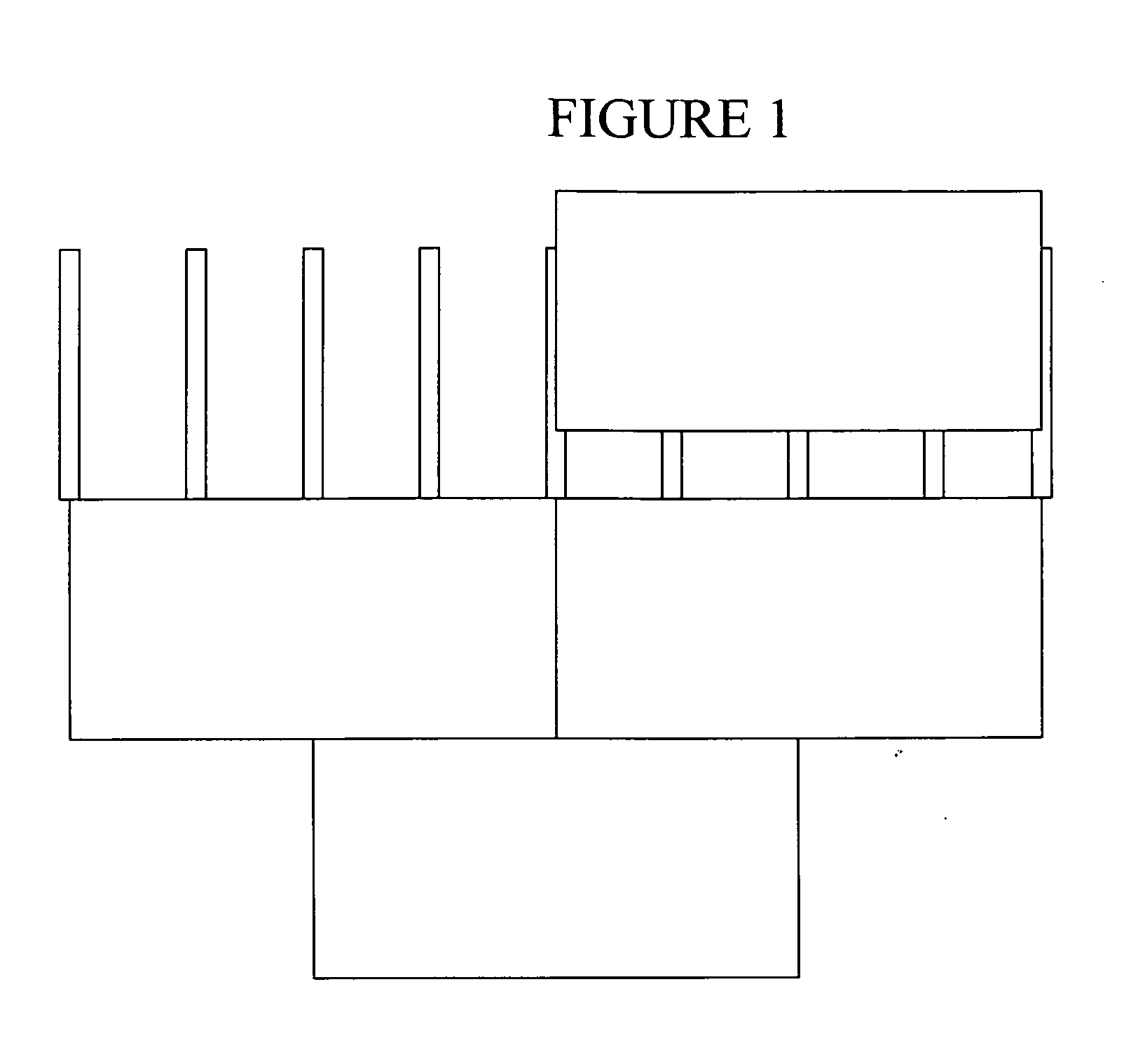Contained Load Transfer Device for Wood Sheathing Products and Roof Construction Method Therewith
a load transfer device and load transfer technology, applied in the direction of roofs, constructions, fastening means, etc., can solve the problems of difficult application of adhesive tape, reducing the ability of the product to adhere, and exhibiting a certain reduction in the ability to adhere, etc., to achieve convenient installation, convenient maneuverability, and reliable connection/linking
- Summary
- Abstract
- Description
- Claims
- Application Information
AI Technical Summary
Benefits of technology
Problems solved by technology
Method used
Image
Examples
Embodiment Construction
[0026]Before the present articles, devices, and / or methods are disclosed and described, it is to be understood that the aspects described below are not limited to specific embodiments, specific embodiments as such may, of course, vary. It is also to be understood that the terminology used herein is for the purpose of describing particular aspects only and is not intended to be limiting.
[0027]In this specification and in the claims which follow, reference will be made to a number of terms which shall be defined to have the following meanings:
[0028]It must be noted that, as used in the specification and the appended claims, the singular forms “a,”“an,” and “the” include plural referents unless the context clearly dictates otherwise. Thus, for example, reference to “an acetyl polymer” includes mixtures of acetyl polymers; reference to “a metal” includes mixtures of two or more metals, and the like.
[0029]Ranges may be expressed herein as from “about” one particular value, and / or to “abo...
PUM
 Login to View More
Login to View More Abstract
Description
Claims
Application Information
 Login to View More
Login to View More - R&D
- Intellectual Property
- Life Sciences
- Materials
- Tech Scout
- Unparalleled Data Quality
- Higher Quality Content
- 60% Fewer Hallucinations
Browse by: Latest US Patents, China's latest patents, Technical Efficacy Thesaurus, Application Domain, Technology Topic, Popular Technical Reports.
© 2025 PatSnap. All rights reserved.Legal|Privacy policy|Modern Slavery Act Transparency Statement|Sitemap|About US| Contact US: help@patsnap.com



